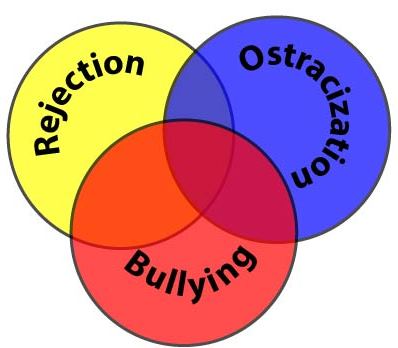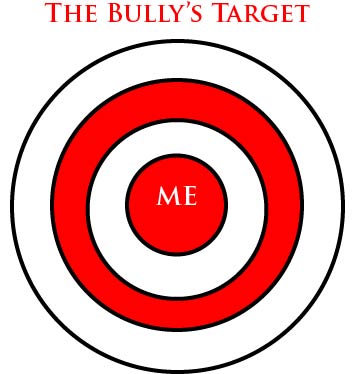Emotional Bullies
Emotional bullying is another term for ostracization. It occurs when one person (or group) is singled out and systematically shut out or shunned by others. Here are steps your child can take if they are ostracized or subject to abuse by emotional bullies. There is a link at the bottom for strategies for parents to take.

How Emotional Bullies Act
Emotional bullies ostracize others intentionally. They may go about systematically singling out one person (or in some cases a group) and mark that person for isolation. Often there is a central person who is doing the bullying, but who uses a group of others (often called minions or other terms) to carry out the isolation.Being socially ostracized and isolated is very damaging and can have life-long implications for the victim. Often by the time they speak up and tell a parent or teacher, considerable emotional damage has been suffered.
Ostracization

In many cases, the minions (or other members of the bullying group) are former friends of the victim. The betrayal of their friend makes the ostracization particularly painful, especially if former secrets are shared. Often, the minion goes along with the abuse out of fear of becoming the next victim and/or desires to gain popularity by acceptance in the group.
How To Deal With Emotional Bullies
Because emotional bullying - or ostracization - overlaps with other forms of bullying, you should be familiar with the six steps for dealing with bullies. Some of these steps may be appropriate for the scenario your child and you are dealing with.Emotional bullying is a little harder to deal with, however, because it is harder to track and can be more insidious. Since physical force is not involved, others may brush it aside. However, it should not be ignored.
There are 3 strategies specifically for dealing with this social ostracization.
Someone Speaks to the Central Bully
Since much of the time, this occurs in a classroom, the teacher or school counselor is the likely person to approach. If it is a club, the club leadership should be involved. If it is a group of neighborhood friends, you may consider talking to the mother of the child.Kids are often afraid of this step, for fear of further retaliation. In reality, it is rare that the group of bullies have any further ability to harm the victim besides what they are already doing.
One activity that is used in anti-bullying exercises does work for some kids. It is modified here. Write the name of the bully(s) on a plain sheet of white paper in heart-block letters like this:

Ask them to crumple the paper up. They won't want to at first, but tell them it will add a new effect to the paper. Have them crumple it into a tight ball. Then uncrumple it.
The crumpling did not improve their art work. Try smoothing it out. Still isn't the same.
What was accomplished by the crumpling? Nothing. What did they gain from it? Nothing.
The bully should be informed that their behavior has damaged someone else's heart, their hopes for their school year, or club, or family holiday, or whatever. And what did the bully gain for crumpling up someone else's hopes and plans? Nothing.
Many teachers, school counselors, scout leaders, and ministers are excellent in handing these scenarios. Others are not as effective. A few can be counter-productive. See our article on how and when to tell those in authority about the abuse. Usually, they need to be able to end (or significantly reduce) the behavior in one chance, or the next step should be taken.
Removal from the Situation
There are not a lot of steps that can be taken here. Either the bullying stops with the verbal reprimand, or the child/teen should be removed from the situation. This may involve changes that need to made: changing classes, changing schedules, changing schools, changing who your family spends their holidays and vacations with.The cost to the family can be significant, if you have to change to a private school, or quit your job to homeschool, or work late because you have to drive your child to a different school. If your child is being harmed by the ostracization, it is worth it.
Finding and Creating New Friendships
Whether the ostracization dissipates and your child stays in the situation, or it continues and he/she is removed, there is a third and very important step that is needed.You need to find an avenue for the child to make new friendships. They need to recognize that they are likeable and have much to give to others.
Consider steps to boost your child's self-confidence if it has been shattered. Perhaps you may want to look at possible factors that contributed to the abuse.
Finally consider the long term goals of recovering from isolation and bullying. See links to other articles on dealing with bullying below.
Share with others. Have you found ways that helped a person deal with emotional bullying.
Articles In This Series
Main Page: DEALING WITH BULLYING- What is bullying? Compare rejection, ostracization, and bullying.
- Why Is MY child shunned? Reasons some children are singled out.
- Teach your child how to deal with a bully.
- When and how to report bullying to authorities.
- Should you homeschool if your child has been bullied.
- Healing After Bullying: Helping Your Child Rebuild Confidence
About Our Site
Hands-On Learning














New! Comments
Share your feedback with the rest of the home school community.